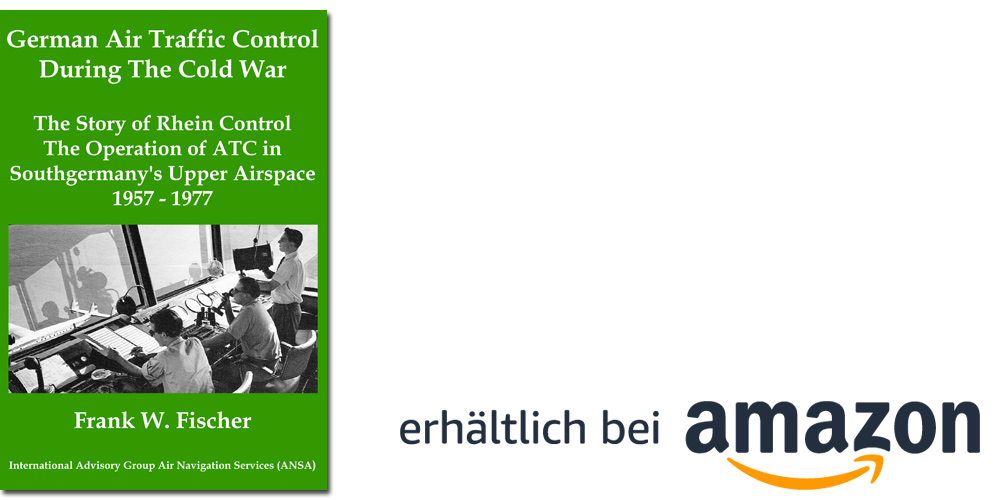
Air Traffic Control: Cold War and Rhein Control - A new Home and new Procedures
Rhein Control arrives at Frankfurt, its staff is preoccupied with personal matters, moving households, finding accommodation, registering the family, putting children in new schools and trying to settle in a new community. The centre itself, now being a sub-unit of the Frankfurt RANSU, whose management only observes Rhein’s operation from a distance, two km away in the new airport terminal, had not at all been brought to a required standard as regards its manpower, room size, number of sectors, equipment and procedures. And traffic now began to soar and the centre’s superiors lacked knowledge completely on upper airspace civil and military matters. Responsible members of BFS management avoided to visit the unit fearing to be attacked by the controllers with the many shortcomings and problems that they faced day-in and day-out for years.
In fact, Rhein UAC at Frankfurt had only been planned as an “Interim Solution” for a period of about three years, before EUROCONTROL’s plans would become reality. It was the same experience as in the 60’ies. What was proclaimed as a short-term measure lasted eight years and longer. EUROCONTROL being officially responsible and BFS, its agent, first had to make up their mind whether Rhein UAC should finally be relocated to Maastricht in the Netherlands or to Karlsruhe or to stay at Frankfurt before it was concluded to definitely move to Karlsruhe together with the centre’s GAF component, which still constituted a relatively small group only at the time of the move.
In this chapter emphasis is put also on legal issues of the unit’s service provision. We are still in the era of analogue radar, wire-based telephones and the first steps into digitalization; CRT displays. The first flight was handled on 24 April 1968 from the new facility in the old airport terminal at Frankfurt / Main. Technicians and controllers fought for space. Controllers demanded more workspace and room to move, whereas technicians argued for optimum equipment configuration. Different consoles and new analogue radar displays had been installed.
The ATS operations chief of the RANSU and the facility superintendent were never seen in the UAC. For the latter two, upper airspace matters constituted another planet. That made Rhein UAC’s daily life again more difficult. Maintenance technicians showed no understanding of Rhein’s requirements and often negated operational necessities, tolerated by the RANSU’s management, which even persuaded technicians to make false and defamatory unjustified statements against controllers. This sounds strange, but is a fact. Competent controllers were considered the “enemy”.
Technical maintenance was located in between the Frankfurt ACC and Rhein UAC operations rooms. The one-channel long-range radar used was a Telefunken GRS located between Frankfurt and Heidelberg (Neunkirchner Heights), serving both the ACC and the UAC. Its SSR became officially commissioned only in 1970. Frankfurt ACC already moved into the newly erected terminal in December 1970. GRS-fed radar scopes were horizontally mounted providing coverage up to 120 NM in range up to 40.000 feet altitude. For Rhein’s operation four radar positions were available, three of them for joint-use by the subsectors and one stand-alone for the handling of OAT-RD military VFR flights by the GAF. All subsectors were again equipped with one VHF and one UHF radio frequency, however now coupled so that civil pilots could also hear the transmissions of military pilots and vice versa.
There were again two watch supervisor positions with the civil supervisor still acting as EUROCONTROL’s agent. The GAF section, designated as MATRAC, again supported Rhein UAC with military ATS staff, limited to 14 hours on weekdays only and officially being charged with the handling of OAT VFR traffic due to their dramatic shortage of licensed military controllers.
Read More:
German Air Traffic Control During The Cold War
The Story of Rhein Control
Vol 3, The Operation of ATC in South Germany's Upper Airspace 1957-1977
https://www.amazon.de/dp/1536994391